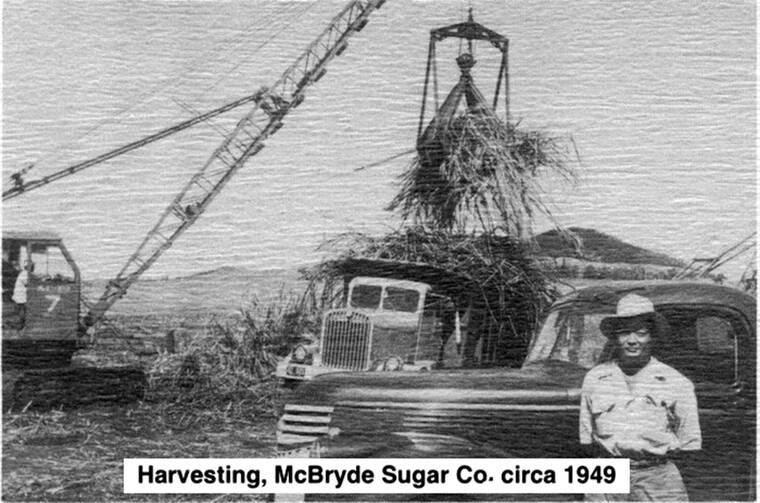In May 1968, when my fiancee, Ginger Beralas of Lihu‘e, first took me to Kaua‘i, there were eight sugar plantations in operation on the island: Kilauea, Lihu‘e Plantation, Grove Farm, McBryde, Olokele, G &R, Waimea, and Kekaha.
In May 1968, when my fiancee, Ginger Beralas of Lihu‘e, first took me to Kaua‘i, there were eight sugar plantations in operation on the island: Kilauea, Lihu‘e Plantation, Grove Farm, McBryde, Olokele, G &R, Waimea, and Kekaha.
Later, I worked at McBryde as an irrigation installer and haul cane truck driver, and observed men and women at work at other jobs, and became somewhat familiar with sugar production.
I’ve since found out there were 12 steps in the production of sugar at McBryde and other plantations:
1. Subsoil plowing: The soil was occasionally loosened at depths of from 18 to 24 inches with tractor-driven subsoilers.
2. Disc plowing: Then large tractor-driven disc plows turned the soil over making it ready to receive seed cane.
3. Surveying: Surveyors then determined the course of cane rows and irrigation ditches to closely follow land contours.
4. Planting: Tractors then made furrows in the soil where hand-cut segments of treated cane stalks were dropped and covered.
5. Irrigation: Water was applied through ditches or by drip irrigation.
6. Weed control: Weeds were controlled with herbicide by men carrying knapsack sprayers (sabedong men).
7. Fertilizing: Fertilizer was applied by hand or by machine.
8. Ripening: Prior to harvesting, chemical ripeners were applied to bring the stalk sugar content to an acceptable level.
9. Burning off: On the day a cane field was to be harvested, it was first burned to destroy cane trash. The heat didn’t harm the juicy stalks.
10. Harvesting: Following burning, tractors pushed the cane into windrows and cranes with claw-like grabs swung the stalks onto waiting haul cane trucks for transport to the mill.
11. Hauling: Cane was then transported by truck to the mill.
12. The mill: The mill converted the cane into raw sugar. First, cane from the trucks was dumped into a large conveyor where rocks were dumped and dirt and debris was washed off. Then the cane was crushed, sugar was extracted, the extracted juice was purified, and water was evaporated to produce raw sugar. Molasses, bagasse and mudpress were byproducts of the process.




